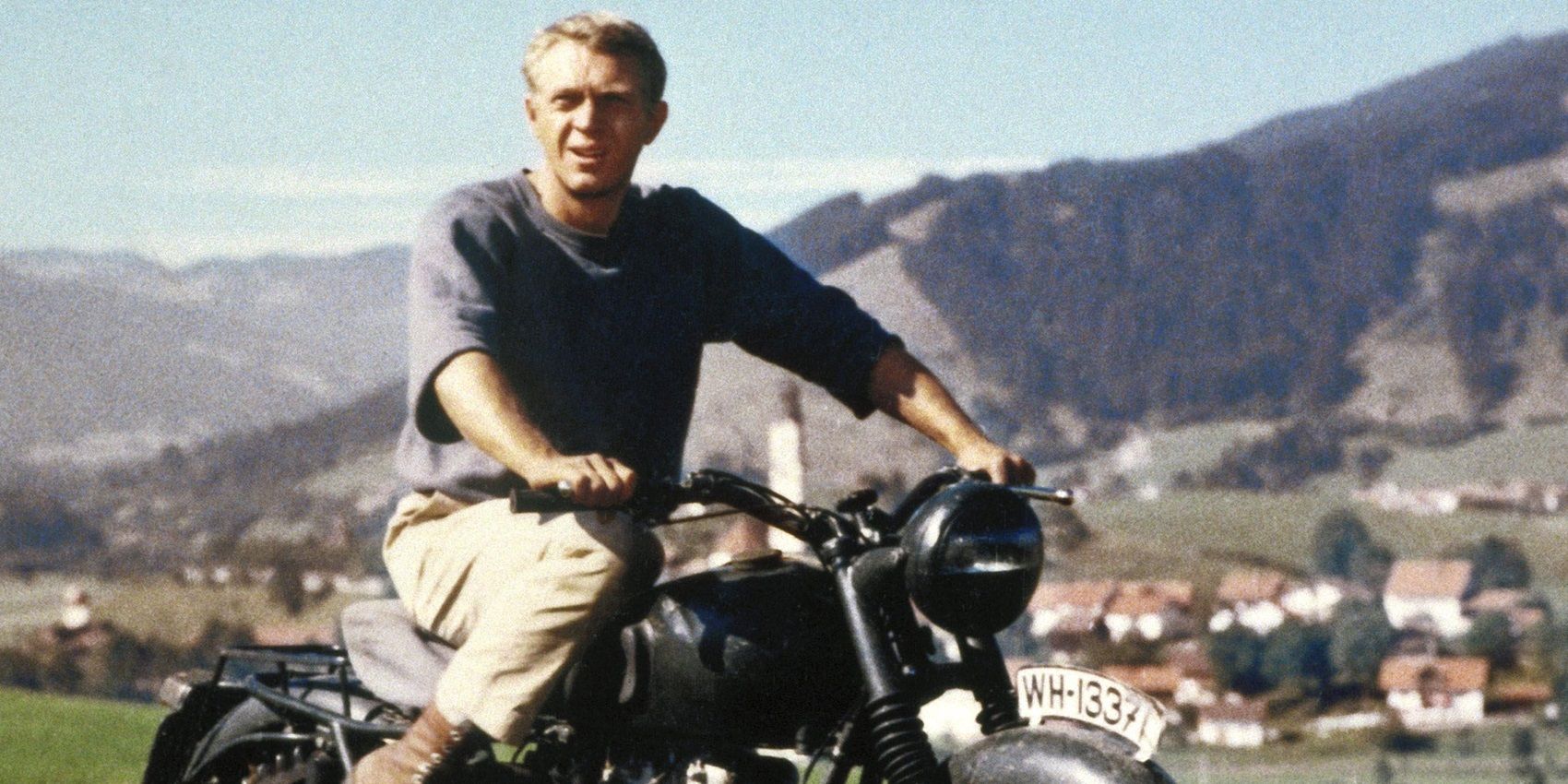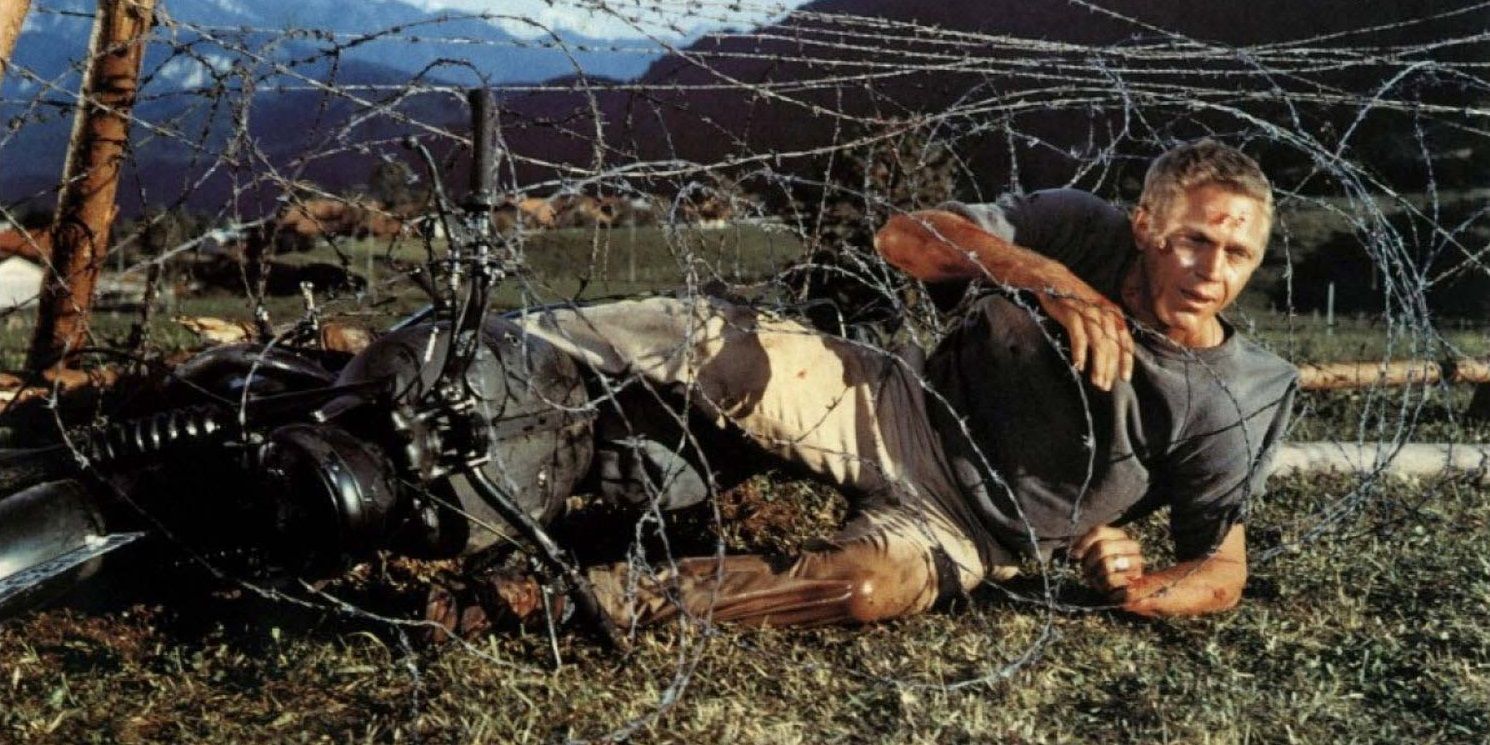
John Sturges’ The Great Escape is, without a doubt, one of the finest cinematic portraits of the Second World War ever put to screen. As the tale of some prisoners of war defying insurmountable odds to escape captivity, The Great Escape captures the spirit of the soldiers who fought for the Allies in World War II with more heart and grit than most movies about the conflict.
Steve McQueen leads a star-studded ensemble cast consisting of such screen legends as Charles Bronson, James Garner, and Richard Attenborough. Unsurprisingly, there are some interesting stories behind the making of this action-packed war epic.
10 Kirk Douglas Was The First Choice For The Role Of Hilts

Originally, producer Walter Mirisch’s top choices for the roles of Hilts and Hendley were Kirk Douglas and Burt Lancaster, respectively, which could’ve been pretty awesome. Contrary to Quentin Tarantino’s Once Upon a Time in Hollywood, the fictitious Rick Dalton was never under consideration for the role.
Richard Harris was initially cast to play Roger Bartlett, but he had to drop out of the project due to his commitments to This Sporting Life. The role was offered to John Mills, but he turned it down.
9 Steve McQueen Only Signed On To Show Off His Biking Skills

Steve McQueen did his own motorcycle stunts for The Great Escape, having performed most of his own stunts in Bullitt and CHiPs. In fact, he only signed on to do the movie on the condition that he could show off his biking skills in it.
As a result, the motorcycle chase that has become the movie’s defining hallmark was added at the actor’s behest. John Sturges considered writing out McQueen’s character to avoid this, but the studio considered him essential.
8 The Script Went Through 11 Drafts And Was Still Being Written During Filming

According to director John Sturges, the screenplay for The Great Escape went through 11 drafts across six different writers before he was happy with it.
The script still wasn’t finished when production began and was completed during filming. Sturges would later say that this was the right way to make The Great Escape and helped the movie to become what it ultimately became.
7 Former Coal Miner Charles Bronson Advised John Sturges About Tunneling

In The Great Escape, Charles Bronson plays the escapee nicknamed “Tunnel King.” He was able to bring his own knowledge to the role, as he used to work as a coal miner before breaking into acting. He advised John Sturges about how to get the dirt out of the tunnel. Like his character, Bronson was claustrophobic.
The real “Tunnel King,” Wally Floody, was transferred to another camp right before the escape. He assisted the filmmakers as a consultant for more than a year.
6 Studio Executives Tried To Organize A “Miss Prison Camp” Pageant To Add Sex Appeal To The Film

Early in the production of The Great Escape, the studio United Artists began to send memos to John Sturges asking him to add female roles to the movie. One executive even suggested adding an attractive woman in a low-cut top to Ashley-Pitt’s death scene.
In order to cast this role, the studio tried to organize a “Miss Prison Camp” beauty pageant in Munich, at which point Sturges stepped in to put a stop to the madness.
5 Donald Pleasance Was A Real P.O.W. During World War II

Donald Pleasance really plays against type in The Great Escape, but he could relate pretty closely to his character because he was actually a P.O.W. during World War II. He was an aircrewman in the Royal Air Force. His plane was shot down and he was captured by German soldiers and tortured as a prisoner of war.
When he gave technical advice to John Sturges, he was politely told to keep his opinions to himself. As soon as Sturges found out from another actor that Pleasance was a real P.O.W., he began asking him for insight every step of the way.
4 The Barbed Wire Props Were Created By The Whole Cast And Crew

Whenever the cast and crew had some downtime throughout the production of The Great Escape, they were all given little five-inch strings of black rubber to tie together. From stars like James Garner to the craft service employees, everybody got involved.
This eventually created the massive amounts of barbed wire props that appear throughout the movie on the fences of the prison.
3 Steve McQueen Played One Of The German Soldiers Chasing His Own Character

The most iconic moment in The Great Escape is arguably the climactic chase in which the Germans hunt down Steve McQueen on motorcycles, with a close second being the bouncing of the ball in solitary confinement.
Director John Sturges allowed Steve McQueen to don a disguise and play one of the German soldiers chasing his own character. He played the soldier who runs into the wire.
2 Charles Bronson Joked He’d Steal David McCallum’s Wife, Then Did

While he was shooting The Great Escape, Charles Bronson met his co-star David McCallum’s wife, Jill Ireland, and fell in love with her. He joked to McCallum that he was going to steal his wife.
However, that turned out to be no joke. In 1967, Ireland got a divorce from McCallum and promptly married Bronson.
1 Elmer Bernstein Was Able To Live Off His Great Escape Royalties For The Rest Of His Life

Elmer Bernstein developed his iconic score for The Great Escape by writing a rousing militaristic motif and surrounding it with emotional substance. He gave each main character an individual theme riffing on the main theme.
This music became so popular that Bernstein was able to live off of his royalties from The Great Escape for the rest of his life.
https://ift.tt/3kIuzrA
Comments